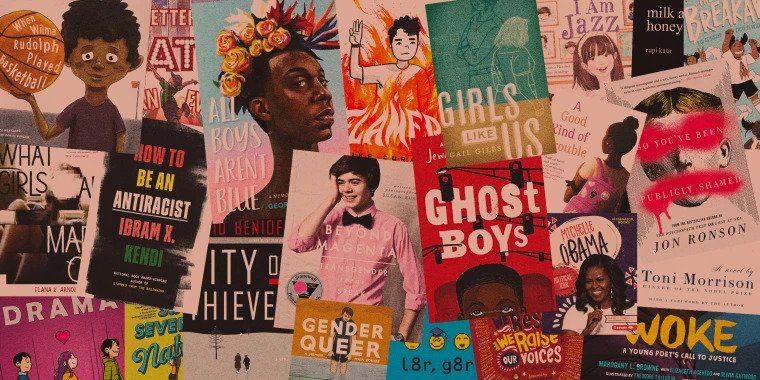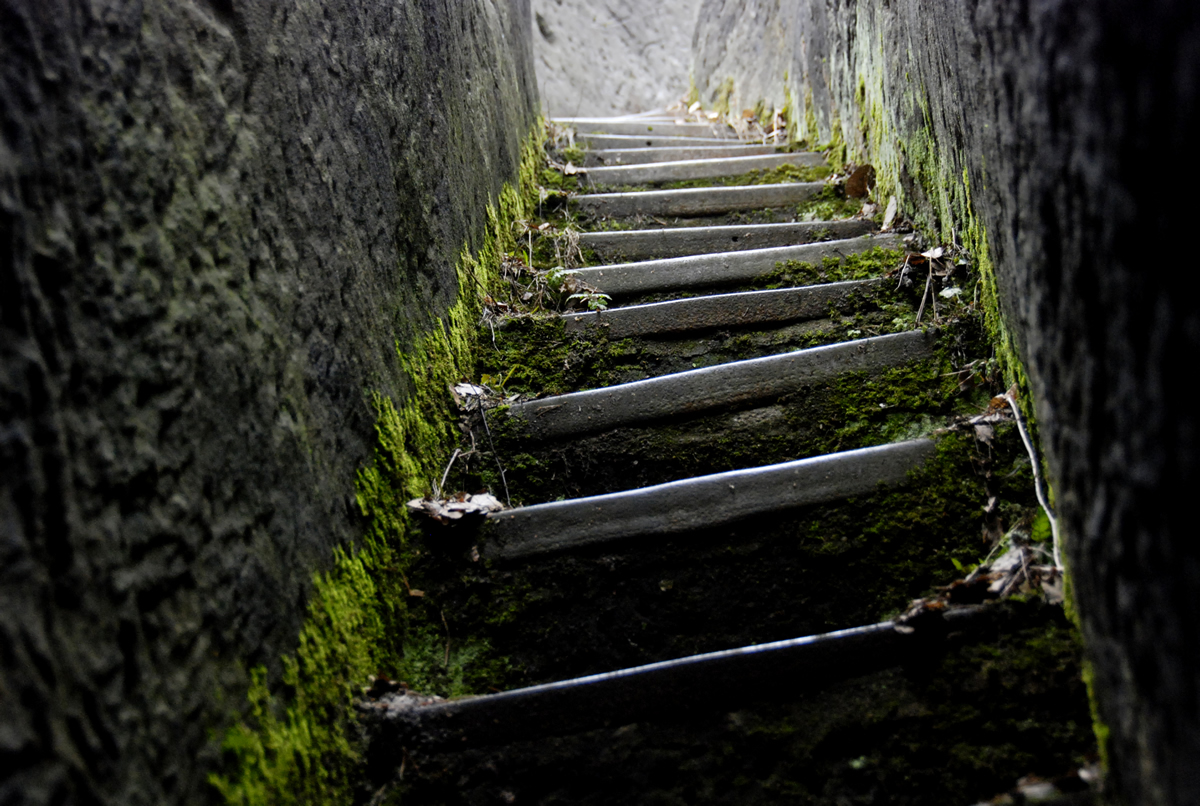Indiana Banned Books
In January, I put together a list of books that various far-right protest groups in Indiana were trying to get banned from Indiana school systems in various towns (Carmel, Fort Wayne, Greenfield, Pendleton, Indianapolis). There are a lot of books that have either been challenged or soon will be – 148 titles and counting.
What these groups are doing is taking book titles compiled by a national organization as “inappropriate books” and searching online catalogs or sending people into school libraries or public libraries to see if those books are available. If they are, they report back to one of the local organizations to get a letter-writing campaign from people in that district to protest the books. They’re also sharing books in a couple of facebook groups to get disruptions going on in as many school systems as they can around the state.
The books are called “inappropriate” if they teach about racism, history of marginalized people, LGBTQA+ subjects, immigration, sex education, gun control, sexism… anything that would challenge white male hegemony.
It sounds like these same people are in connected to the legislation going through the statehouse as well – they’ve referenced it.
Some links where I gathered lists of books they are working on banning:
Sources:
Unify Carmel – How To Search For Inappropriate Books
Facebook page – Mary In the Library
Facebook page – Mama Bears in Carmel Clay Schools
Facebook page – Moms for Liberty – Hamilton County, IN (PUBLIC)
I put together a wishlist on IndyReads online store at bookshop.org if you are interested in helping me put some of these books in our little free library. I’ve been buying diverse books for the last couple of months, but I’d be happy to have more.
- The 1619 Project: A New Origin Story – The New York Times Magazine, Caitlin Roper, et al.
- The 1619 Project: Born on the Water – Nikole Hannah-Jones, Renée Watson, et al.
- #Blacklivesmatter: Protesting Racism – Rachael L. Thomas
- 10,000 Dresses – Marcus Ewert and Rex Ray
- A Big Mooncake for Little Star – Grace Lin
- A Good Kind of Trouble – Lisa Moore Ramée
- A People’s History of the United States – Howard Zinn
- A Testament of Hope: The Essential Writings and Speeches – Martin Luther King
- A Young People’s History of the United States: Columbus to the War on Terror – Howard Zinn and Rebecca Stefoff
- All Are Welcome – Alexandra Penfold and Suzanne Kaufman
- And Tango Makes Three – Peter Parnell, Justin Richardson, et al.
- Antiracist Baby Board Book – Ibram X. Kendi and Ashley Lukashevsky
- Ask a Queer Chick: A Guide to Sex, Love, and Life for Girls Who Dig Girls – Lindsay King-Miller
- Ask Me How I Got Here – Christine Heppermann
- Autoboyography – Christina Lauren
- Back to School: Why Everyone Deserves a Second Chance at Education – Mike Rose
- Backwards Day – S. Bear Bergman and Kd Diamond
- Beautiful – Amy Reed
- Berlin Boxing Club, the PB – Robert Sharenow
- Between the World and Me – Ta-Nehisi Coates
- Beyond the Gender Binary – Alok Vaid-Menon and Ashley Lukashevsky
- Black Lives Matter at School: An Uprising for Educational Justice – Denisha Jones, Jesse Hagopian, et al.
- Blankets: A Graphic Novel – Craig Thompson
- Born Ready: The True Story of a Boy Named Penelope – Jodie Patterson and Charnelle Pinkney Barlow
- Breathless – Jennifer Niven
- Brick by Brick – Heidi Woodward Sheffield
- Call Me Max – Kyle Lukoff
- Call Me Tree / Llámame Árbol – Maya Christina Gonzalez
- Calvin – Vanessa Ford, Jr. Ford, et al.
- Cemetery Boys – Aiden Thomas
- Count Me in – Varsha Bajaj
- Critical Race Theory: The Key Writings That Formed the Movement – Kimberle Crenshaw, Neil Gotanda, et al.
- Dead End – Jason Myers
- Dear Martin – Nic Stone
- Dictionary for a Better World: Poems, Quotes, and Anecdotes from A to Z – Irene Latham, Charles Waters, et al.
- Doing It – Hannah Witton
- Don’t Hug Doug: (He Doesn’t Like It) – Carrie Finison and Daniel Wiseman
- Don’t Touch My Hair! – Sharee Miller
- Drama: A Graphic Novel – Raina Telgemeier
- Dreamers – Yuyi Morales
- Dreaming in Cuban – Cristina García
- Dress Codes for Small Towns – Courtney Stevens
- Exit Here. – Jason Myers
- Full Disclosure – Camryn Garrett
- Full, Full, Full of Love – Trish Cooke and Paul Howard
- Gender Queer: A Memoir – Maia Kobabe
- George (Scholastic Gold) – Alex Gino
- Ghost Boys – Jewell Parker Rhodes
- Graceling – Kristin Cashore
- Hands Up! – Breanna J. McDaniel and Shane W. Evans
- Homegoing – Yaa Gyasi
- How to Be an Antiracist – Ibram X. Kendi
- How We Fight White Supremacy: A Field Guide to Black Resistance – Akiba Solomon and Kenrya Rankin
- I Am Enough – Grace Byers and Keturah A. Bobo
- I Am Jazz – Jessica Herthel, Jazz Jennings, et al.
- I Am Not Your Perfect Mexican Daughter – Erika L. Sánchez
- I Am Rosa Parks – Brad Meltzer and Christopher Eliopoulos
- Introducing Teddy: A Gentle Story about Gender and Friendship – Jessica Walton and Dougal MacPherson
- It’s Not the Stork!: A Book about Girls, Boys, Babies, Bodies, Families and Friends – Robie H. Harris and Michael Emberley
- It’s Perfectly Normal: Changing Bodies, Growing Up, Sex, Gender, and Sexual Health – Robie H. Harris and Michael Emberley
- It’s So Amazing!: A Book about Eggs, Sperm, Birth, Babies, and Families – Robie H. Harris and Michael Emberley
- Jack (Not Jackie) – Erica Silverman and Holly Hatam
- Jacob’s New Dress – Sarah Hoffman, Ian Hoffman, et al.
- Jamie Is Jamie: A Book about Being Yourself and Playing Your Way – Afsaneh Moradian and Maria Bogade
- Jesus Land: A Memoir; With a New Preface by the Author – Julia Scheeres
- Julián Is a Mermaid – Jessica Love
- l8r, g8r – Lauren Myracle
- Leah on the Offbeat – Becky Albertalli
- Let’s Talk about Love – Claire Kann
- Let’s Talk about Race – Julius Lester and Karen Barbour
- Lexicon – Max Barry
- Looking for Alaska – John Green
- Making a Baby – Rachel Greener and Clare Owen
- Malala: My Story of Standing Up for Girls’ Rights – Malala Yousafzai and Sarah J. Robbins
- Marvin Redpost #3: Is He a Girl?
- Max and the Talent Show – Kyle Lukoff and Luciano Lozano
- Max on the Farm – Kyle Lukoff and Luciano Lozano
- Me and Earl and the Dying Girl (Revised Edition) – Jesse Andrews
- Me and White Supremacy: Combat Racism, Change the World, and Become a Good Ancestor – Layla Saad and Robin Diangelo
- Morris Micklewhite and the Tangerine Dress – Christine Baldacchino and Isabelle Malenfant
- My Princess Boy – Cheryl Kilodavis and Suzanne DeSimone
- Nineteen Minutes – Jodi Picoult
- Not My Idea: A Book about Whiteness – Anastasia Higginbotham
- Nuestra Clase es una Familia – Shannon Olsen and Sandie Sonke
- Odd One Out – Nic Stone
- Oliver Button Is a Sissy – Tomie dePaola and Tomie dePaola
- One of a Kind, Like Me / Único Como Yo – Laurin Mayeno and Robert Liu-Trujillo
- One of Us Is Lying – Karen M. McManus
- One of Us Is Next: The Sequel to One of Us Is Lying – Karen M. McManus
- Our Own Private Universe – Robin Talley
- Out of Darkness – Ashley Hope Pérez
- Perfectly Good White Boy – Carrie Mesrobian
- Pink Is for Boys – Robb Pearlman and Eda Kaban
- Pinky and Rex and the Bully: Ready-To-Read Level 3 – James Howe and Melissa Sweet
- Pride: The Story of Harvey Milk and the Rainbow Flag – Rob Sanders and Steven Salerno
- Red: A Crayon’s Story – Michael Hall
- Rick – Alex Gino
- Seeing Gender: An Illustrated Guide to Identity and Expression – Iris Gottlieb and Meredith Talusan
- Separate Is Never Equal: Sylvia Mendez and Her Family’s Fight for Desegregation – Duncan Tonatiuh
- Sex Is a Funny Word: A Book about Bodies, Feelings, and You – Cory Silverberg and Fiona Smyth
- Sex: An Uncensored Introduction – Nikol Hasler and Michael Capozzola
- Shades of People – Sheila M. Kelly and Shelley Rotner
- Sissy: A Coming-Of-Gender Story – Jacob Tobia
- So You Want to Talk about Race – Ijeoma Oluo
- Sparkle Boy – Leslea Newman and Maria Mola
- Speak – Laurie Halse Anderson
- Stamped (for Kids): Racism, Antiracism, and You – Jason Reynolds, Ibram X. Kendi, et al.
- Stamped: Racism, Antiracism, and You: A Remix of the National Book Award-Winning Stamped from the Beginning – Jason Reynolds and Ibram X. Kendi
- Teaching to Transgress: Education as the Practice of Freedom – Bell Hooks
- The Absolutely True Diary of a Part-Time Indian – Sherman Alexie
- The Berlin Boxing Club – Robert Sharenow
- The Boy in the Red Dress – Kristin Lambert
- The Boy Who Wore a Dress – Ben Franks and Jarrod Becker
- The Boys Body Book (Fifth Edition): Everything You Need to Know for Growing Up! (Puberty Guide, Health Education, Books for Growing Up) – Kelli Dunham, Steve Bjorkman, et al.
- The Breakaways – Cathy G. Johnson
- The Colors of Us – Karen Katz
- The Day You Begin – Jacqueline Woodson and Rafael López
- The Every Body Book: The LGBTQ+ Inclusive Guide for Kids about Sex, Gender, Bodies, and Families – Rachel E. Simon and Noah Grigni
- The Gender Wheel: a story about bodies and gender for every body – Maya Christina Gonzalez
- The Hate U Give – Angie Thomas and Nikki Giovanni
- The Haters – Jesse Andrews
- The Infinite Moment of Us – Lauren Myracle
- The Matter of Black Lives: Writing from the New Yorker – Jelani Cobb and David Remnick
- The New Queer Conscience – Adam Eli and Ashley Lukashevsky
- The Other Boy – M. G. Hennessey and Sfe R. Monster
- The Perks of Being a Wallflower – Stephen Chbosky
- The Proudest Blue: A Story of Hijab and Family – Ibtihaj Muhammad, S. K. Ali, et al.
- The Secret Loves of Geeks – Margaret Atwood, Gerard Way, et al.
- The Sissy Duckling: Book and CD – Harvey Fierstein and Henry Cole
- The Skin I’m in: A First Look at Racism – Pat Thomas and Lesley Harker
- The Skin You Live in – Michael Tyler and David Lee Csicsko
- The Story of Ruby Bridges – Robert Coles and George Ford
- The Story of Ruby Bridges: A Biography Book for New Readers – Arlisha Norwood Alston
- The Temptation of Adam – Dave Connis
- They She He Me: Free to Be! – Maya Christina Gonzalez and Matthew Sg
- They, She, He easy as ABC – Maya Christina Gonzalez and Matthew Sg
- This Book Is Gay – Juno Dawson and David Levithan
- This One Summer – Mariko Tamaki and Jillian Tamaki
- Triangles – Ellen Hopkins
- Troublemakers: Lessons in Freedom from Young Children at School – Carla Shalaby
- Understanding Gender – Juno Dawson
- Vampire Academy – Richelle Mead
- What Girls Are Made of – Elana K. Arnold
- When a Bully is President: Truth and Creativity for Oppressive Times – Maya Christina Gonzalez
- When Aidan Became a Brother – Kyle Lukoff and Kaylani Juanita
- Where Did I Come From?: An Illustrated Childrens Book on Human Sexuality – Peter Mayle
- Who Has What?: All about Girls’ Bodies and Boys’ Bodies – Robie H. Harris and Nadine Bernard Westcott



